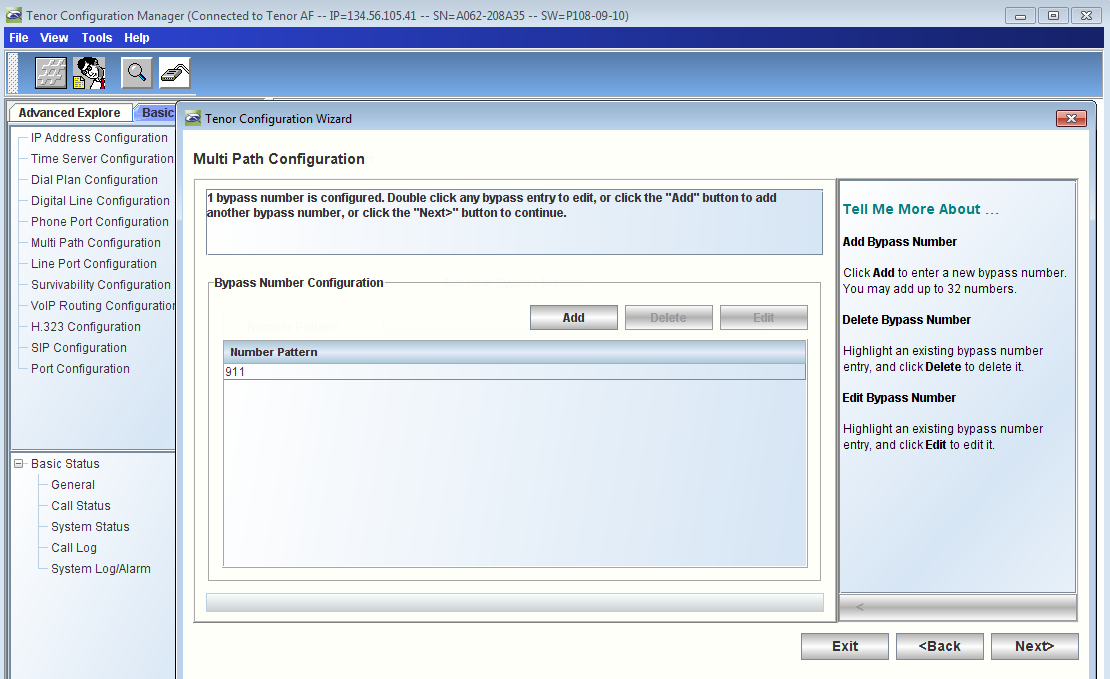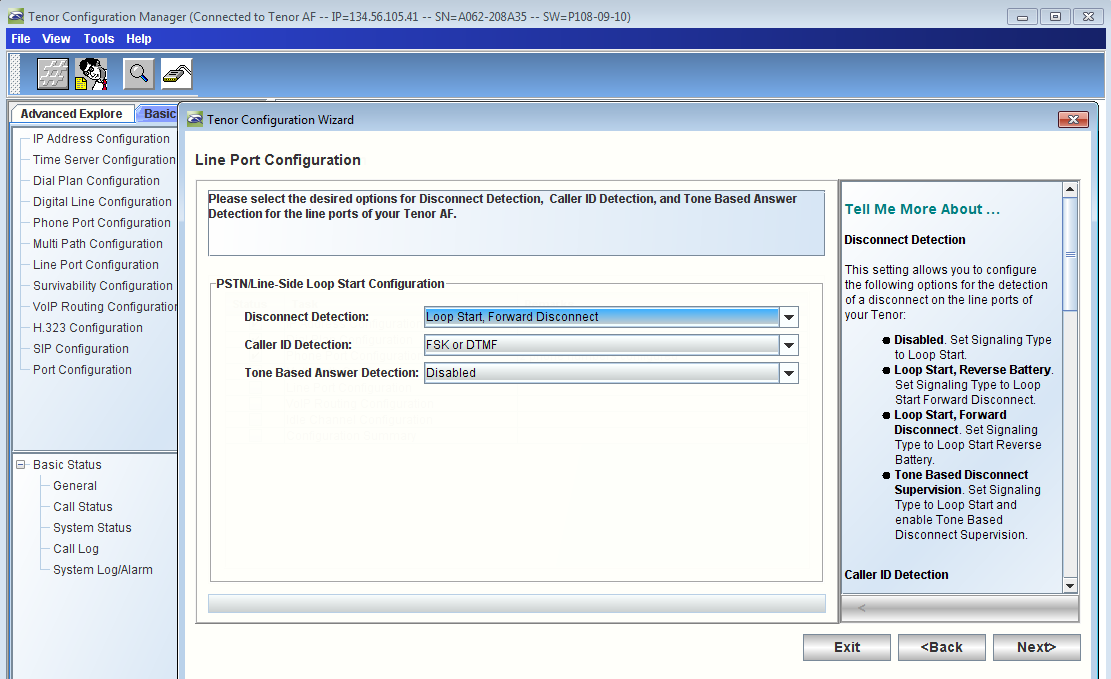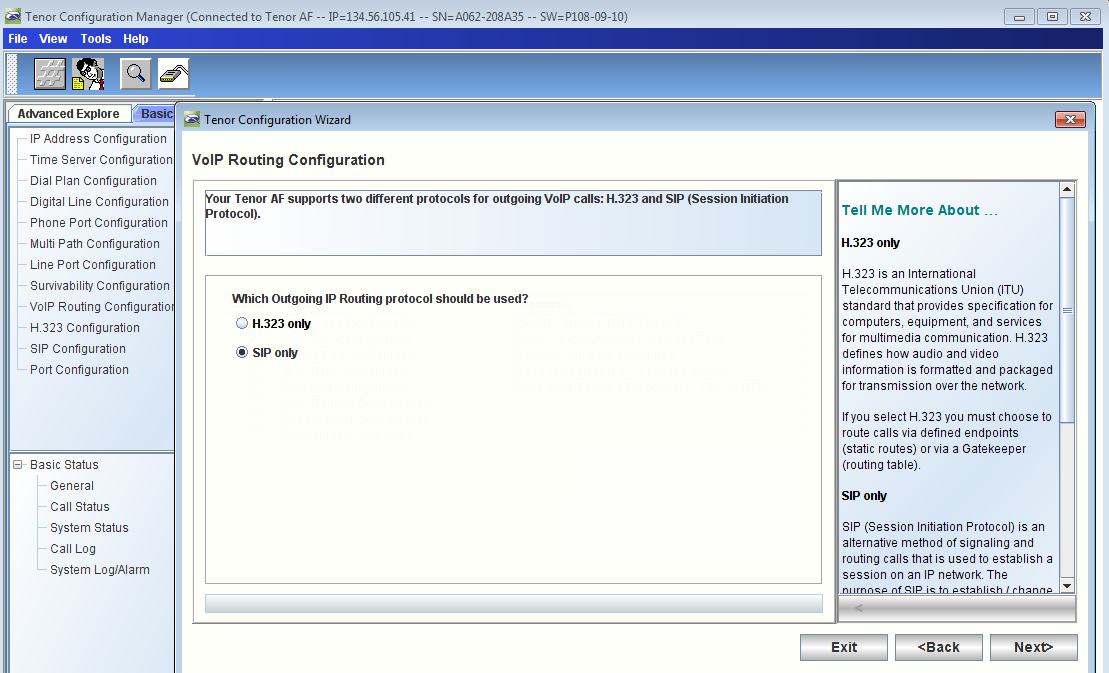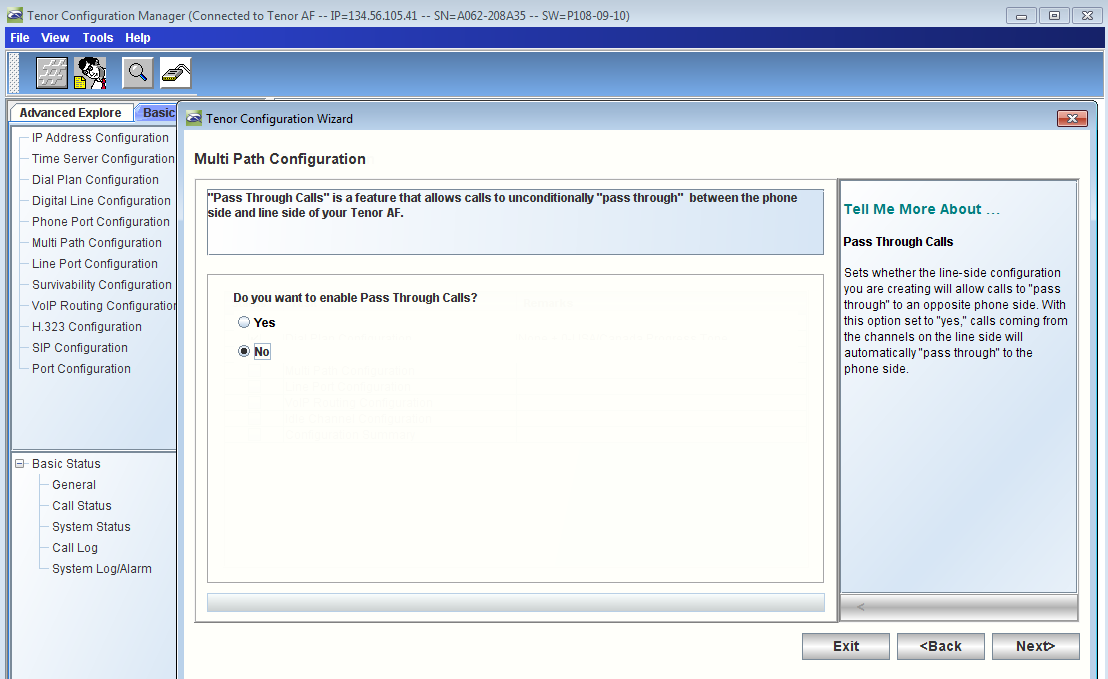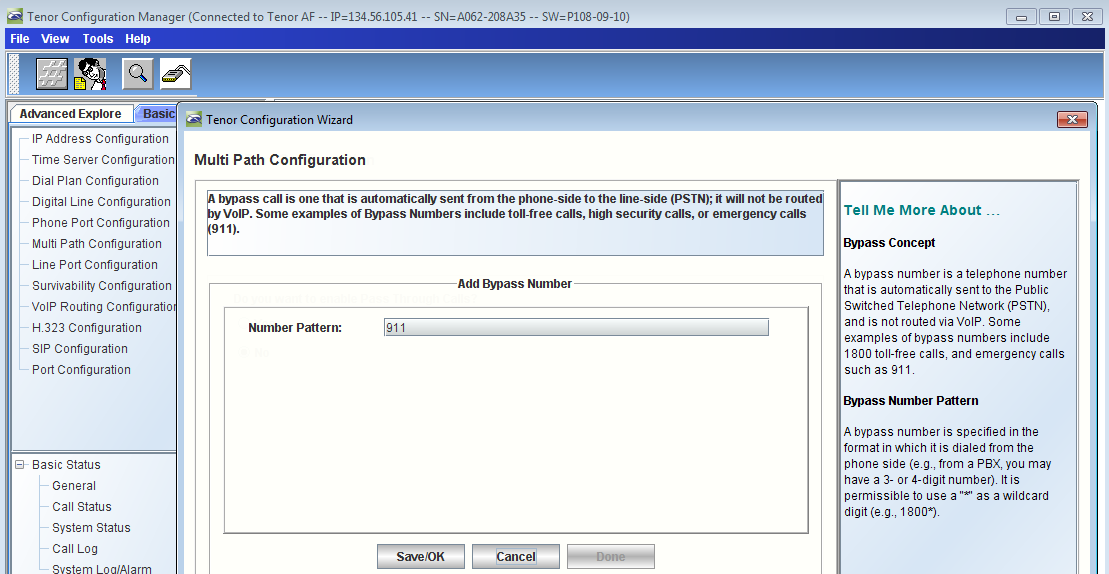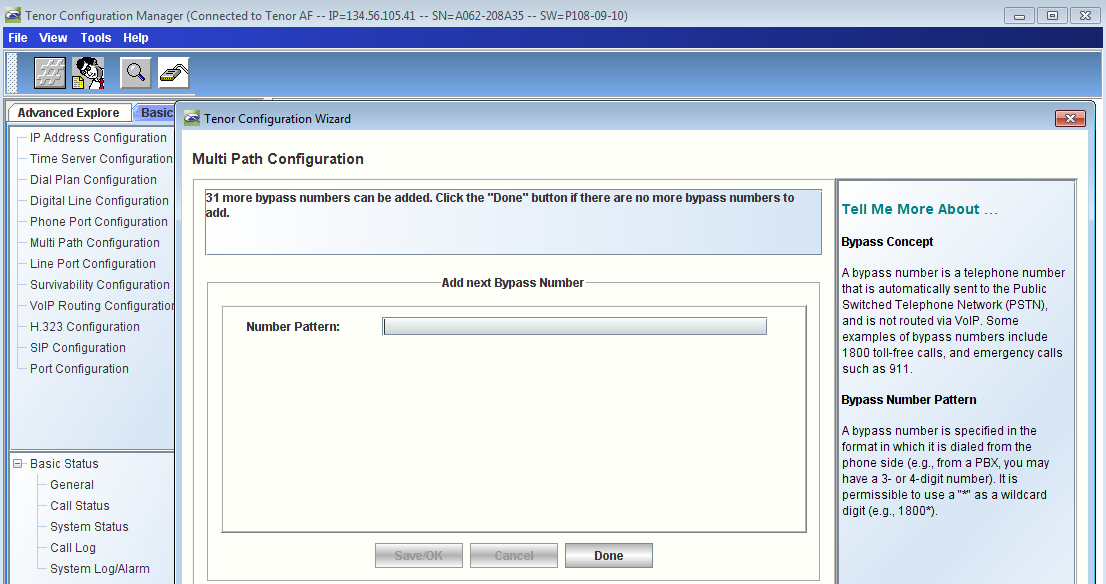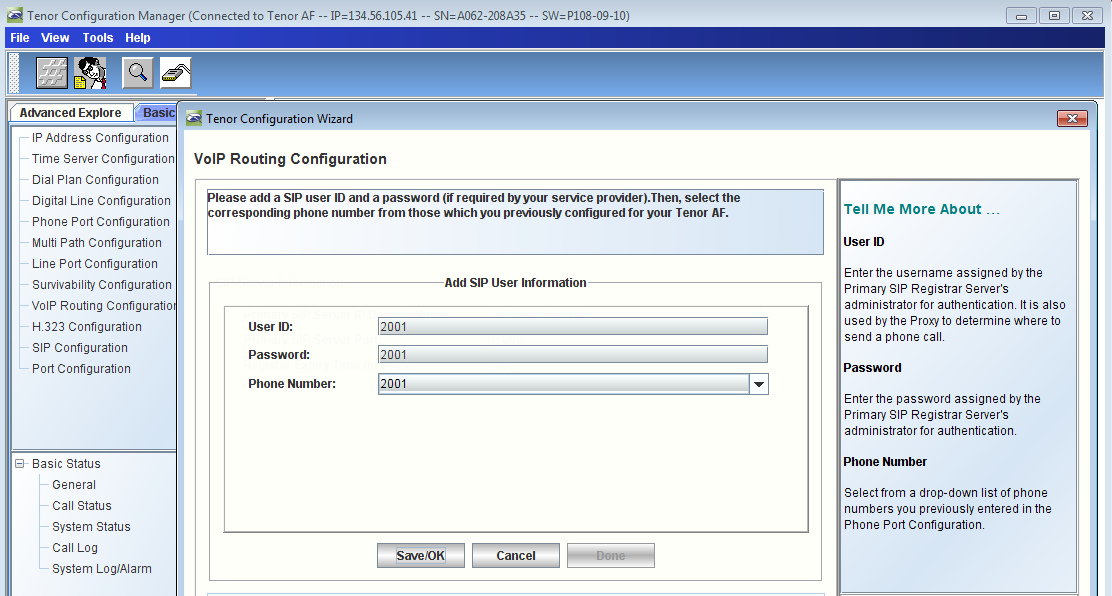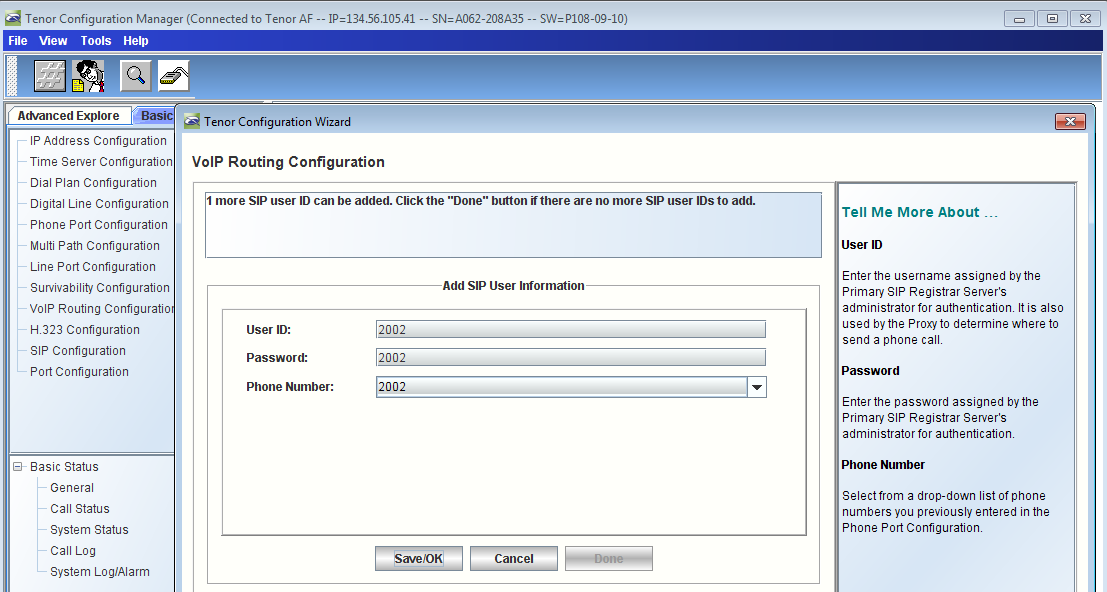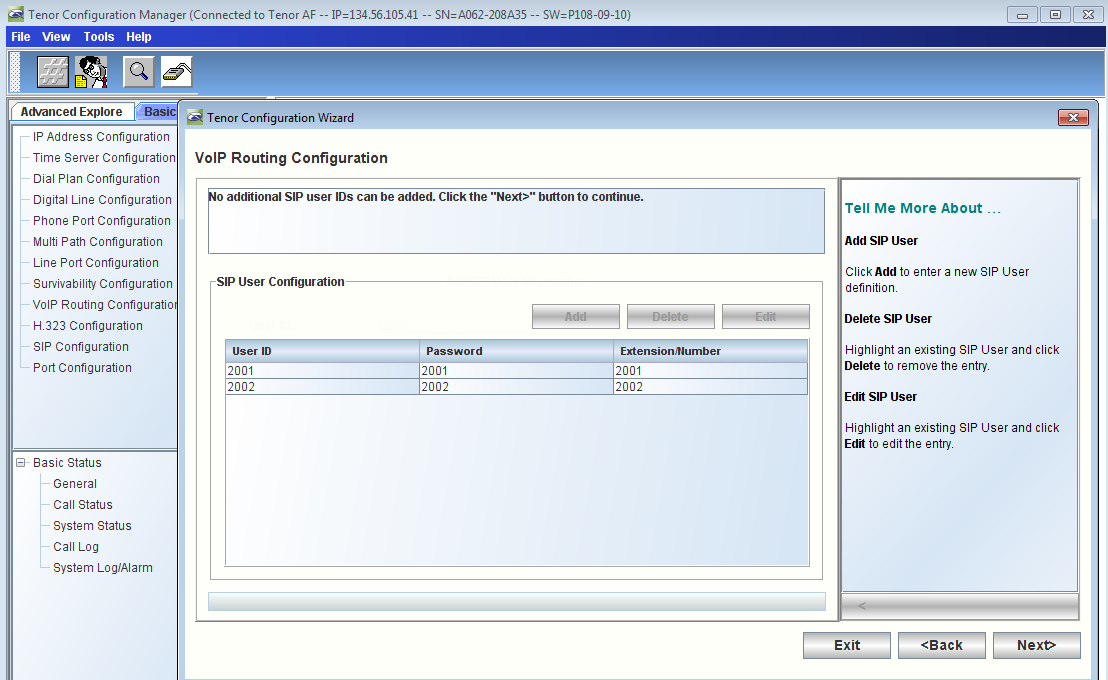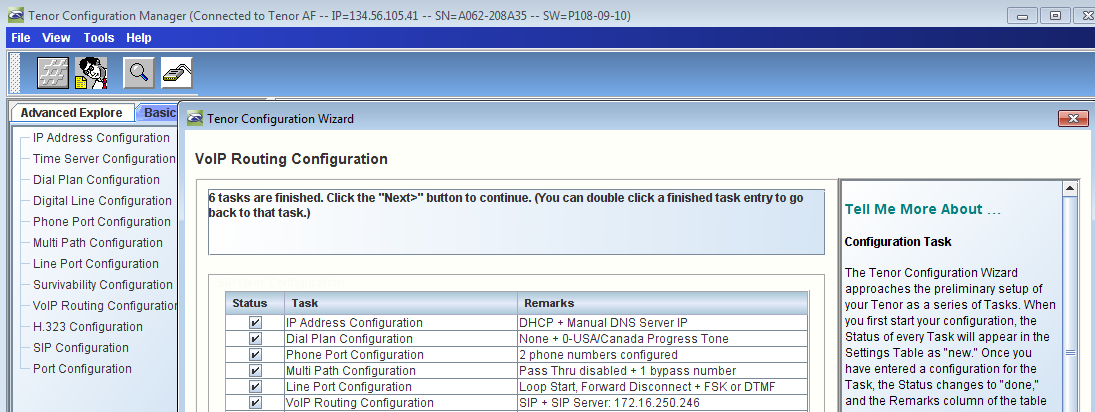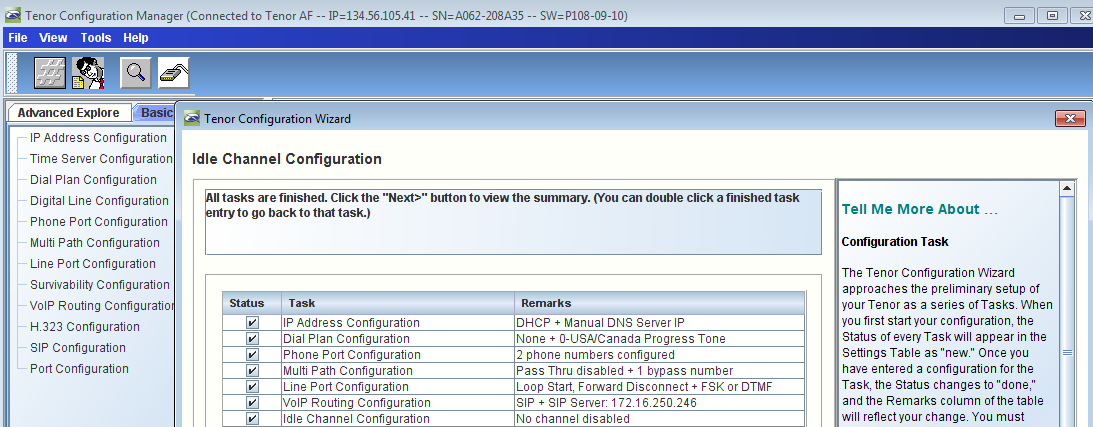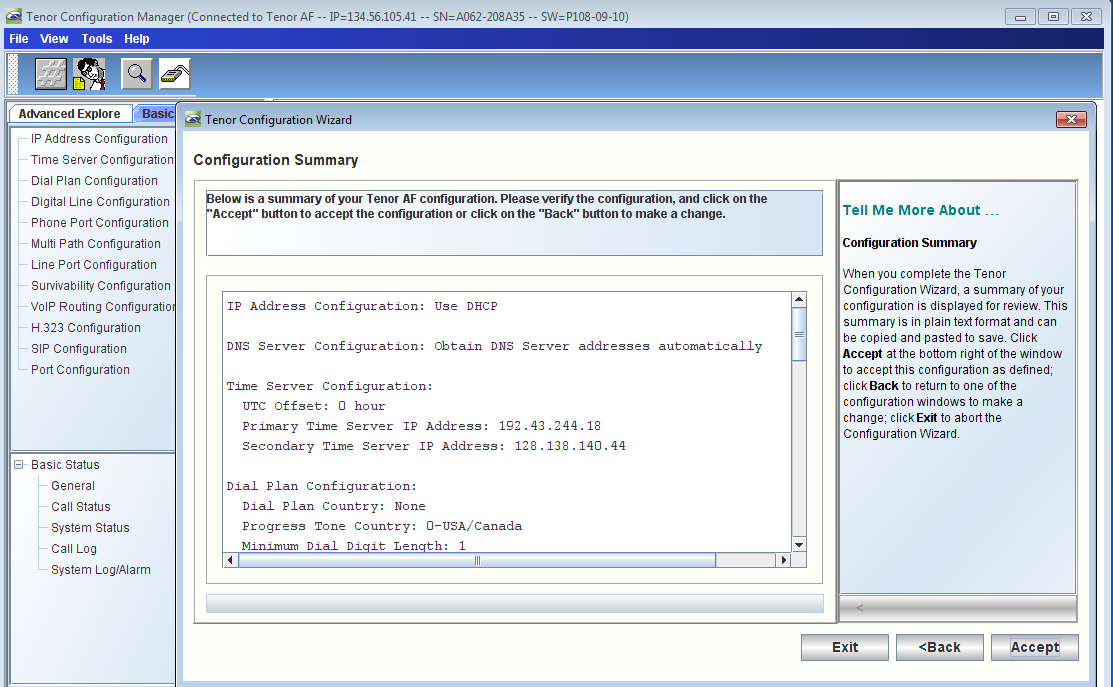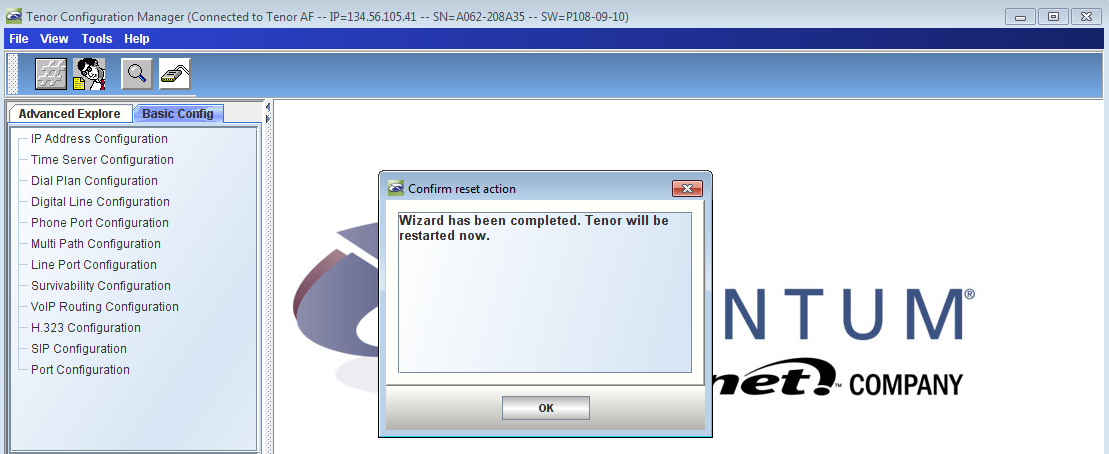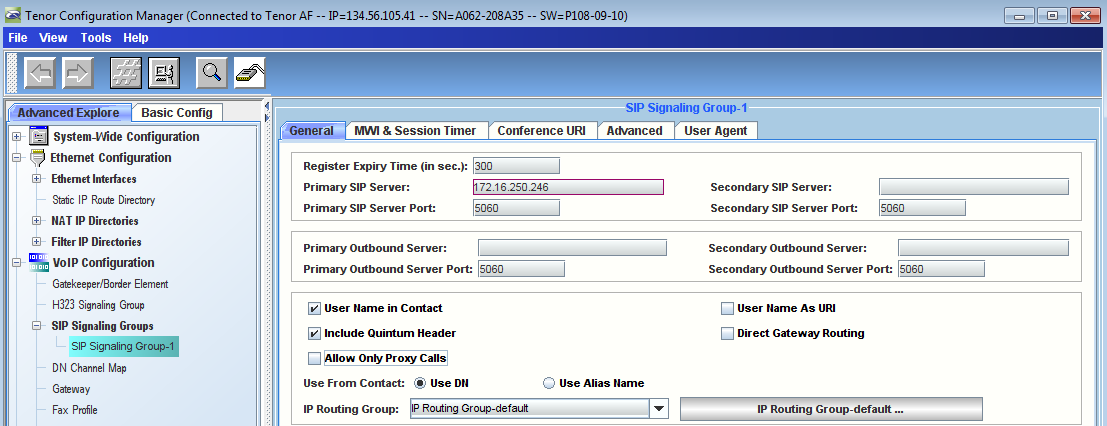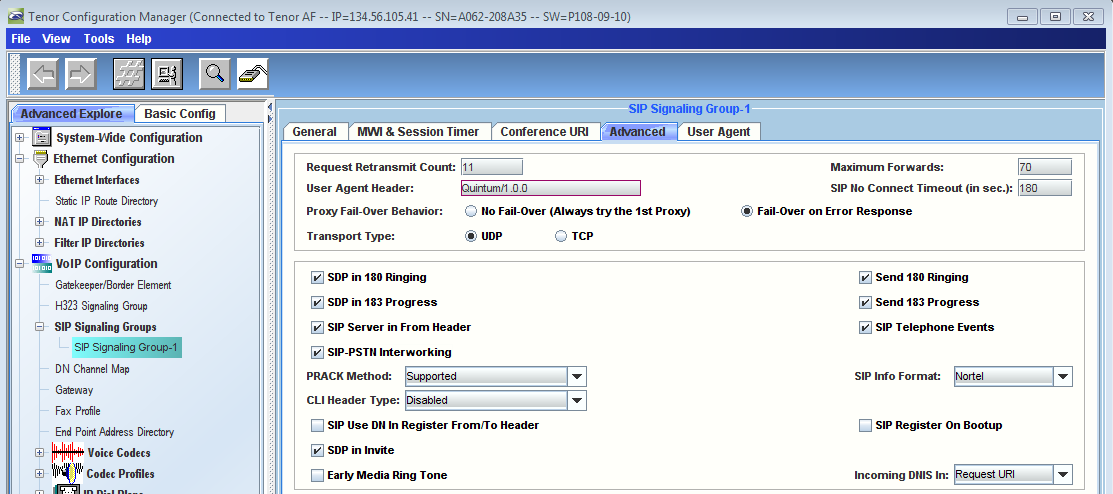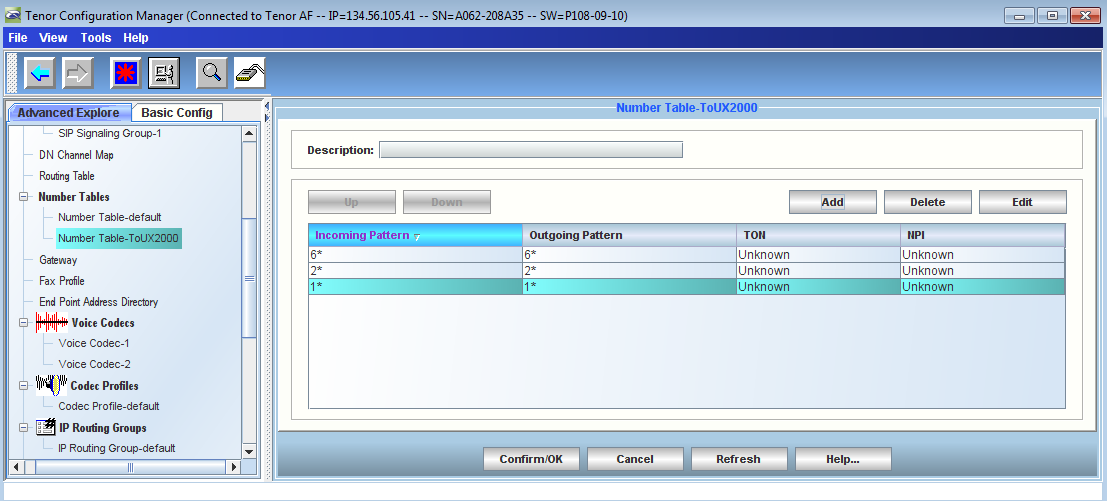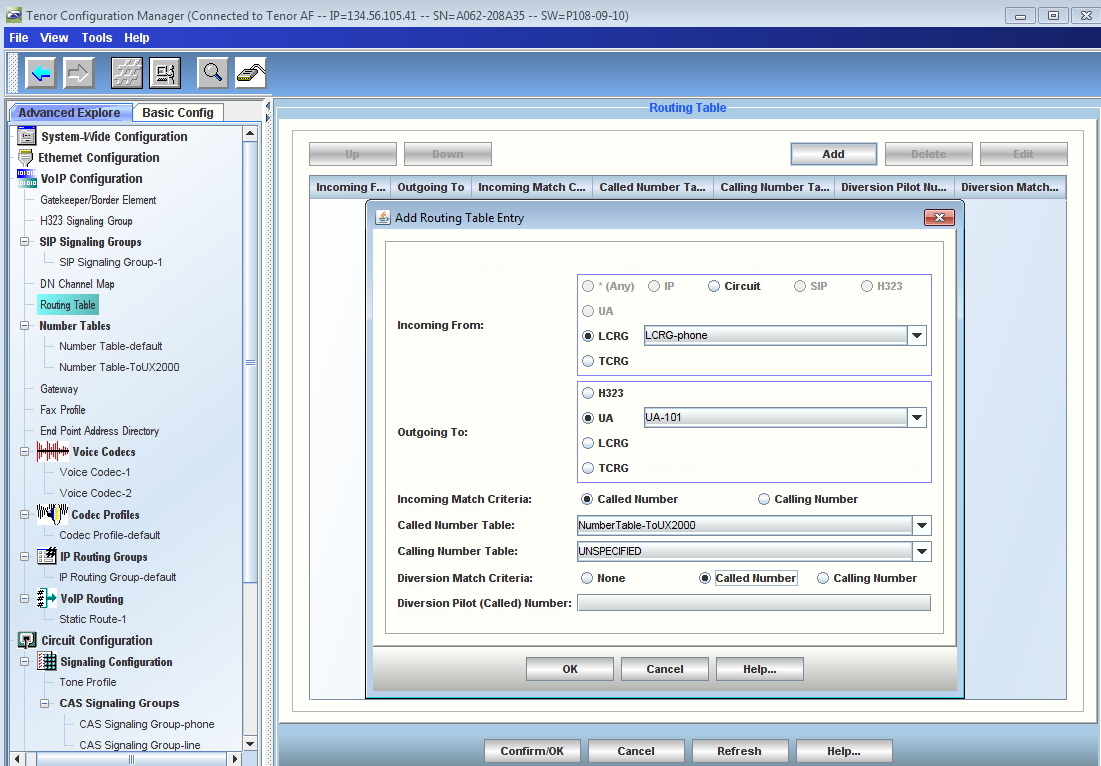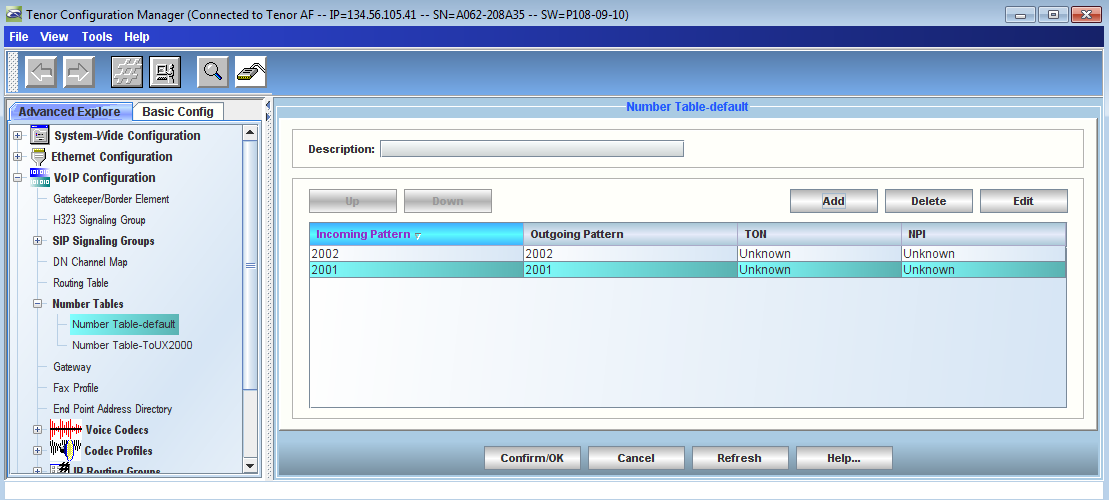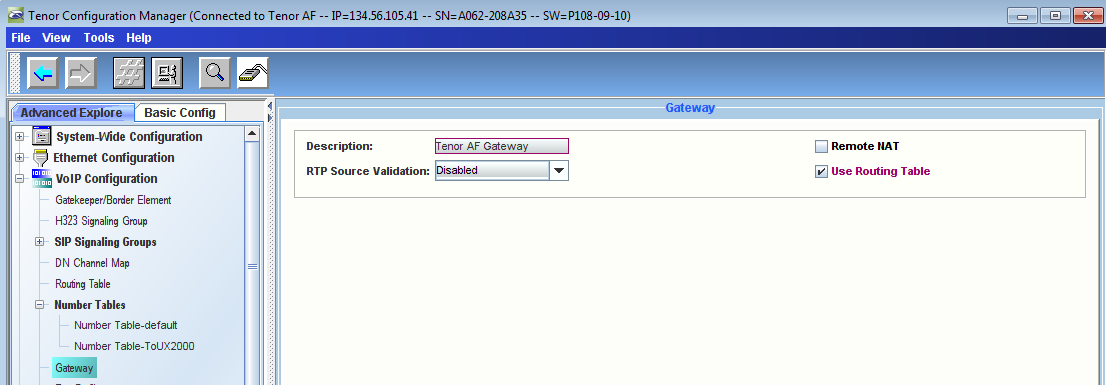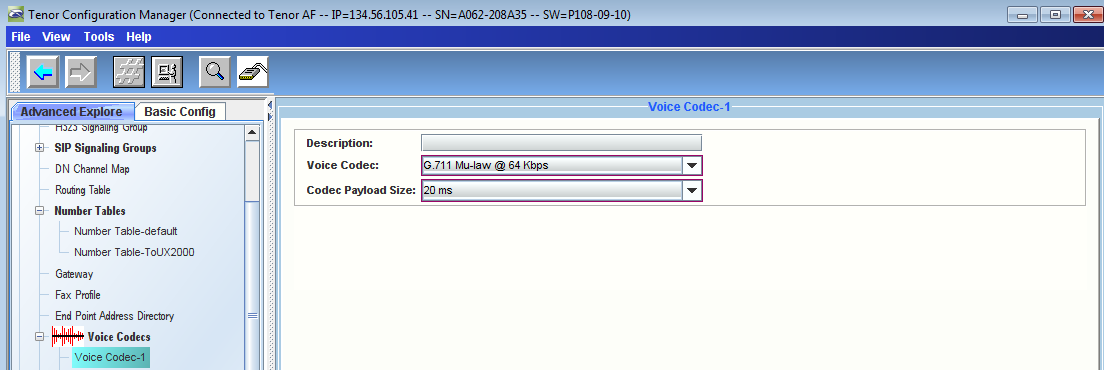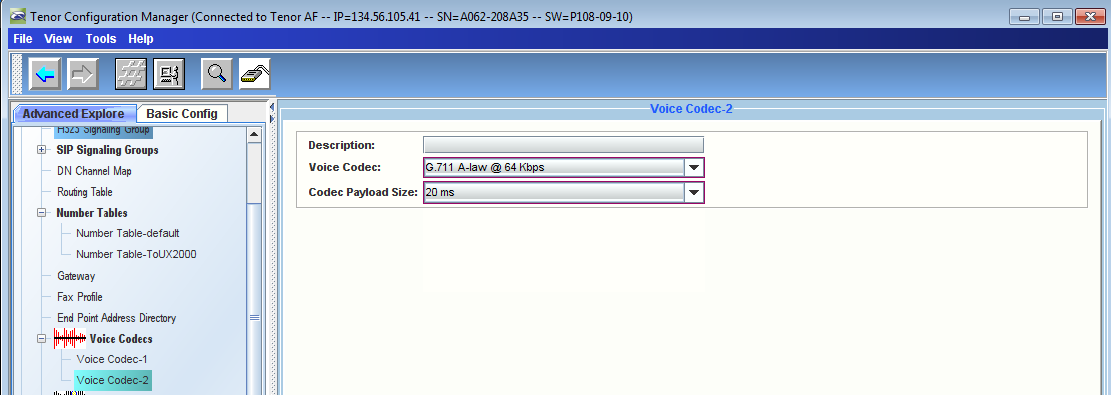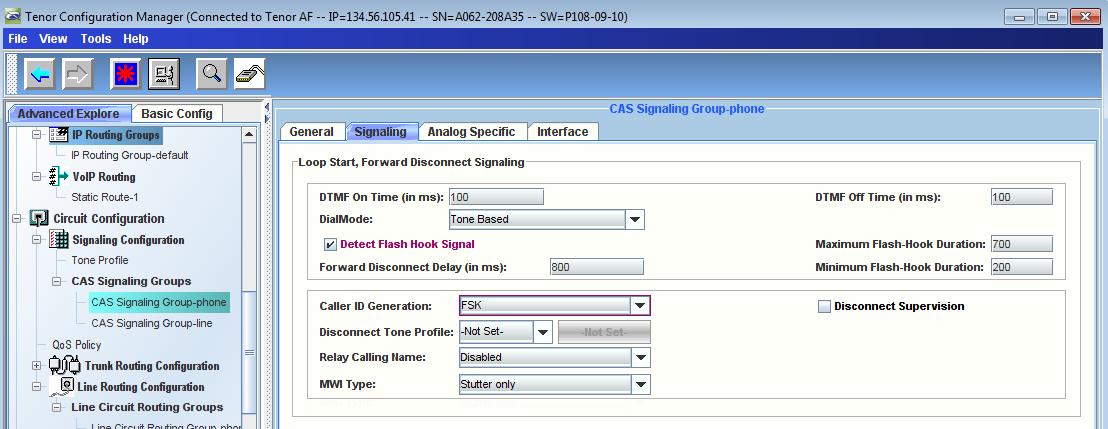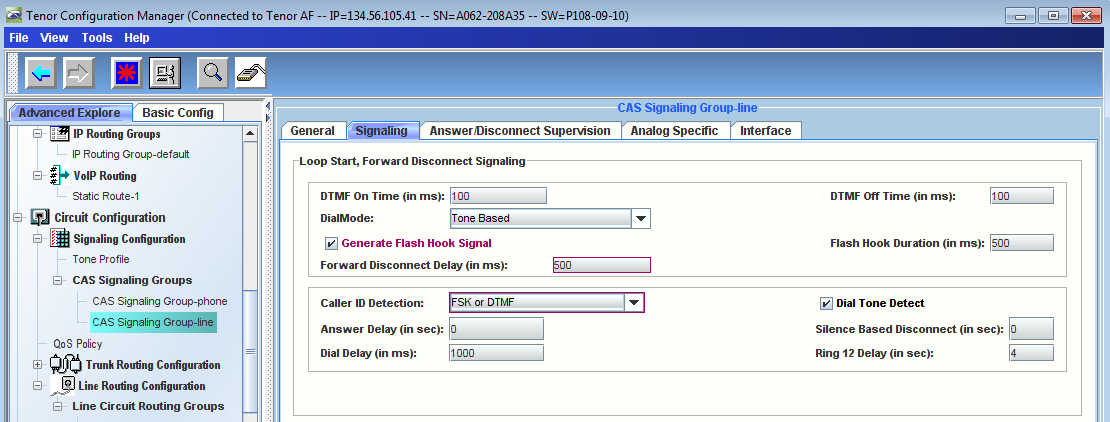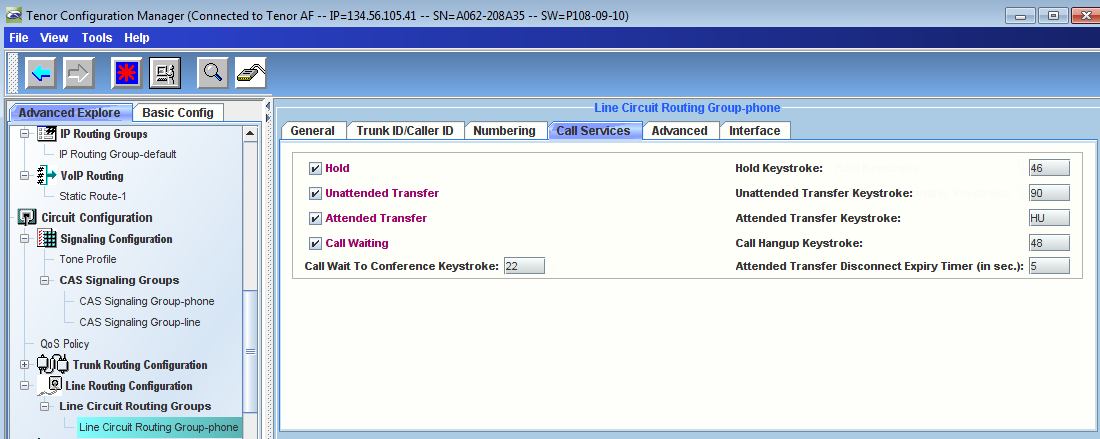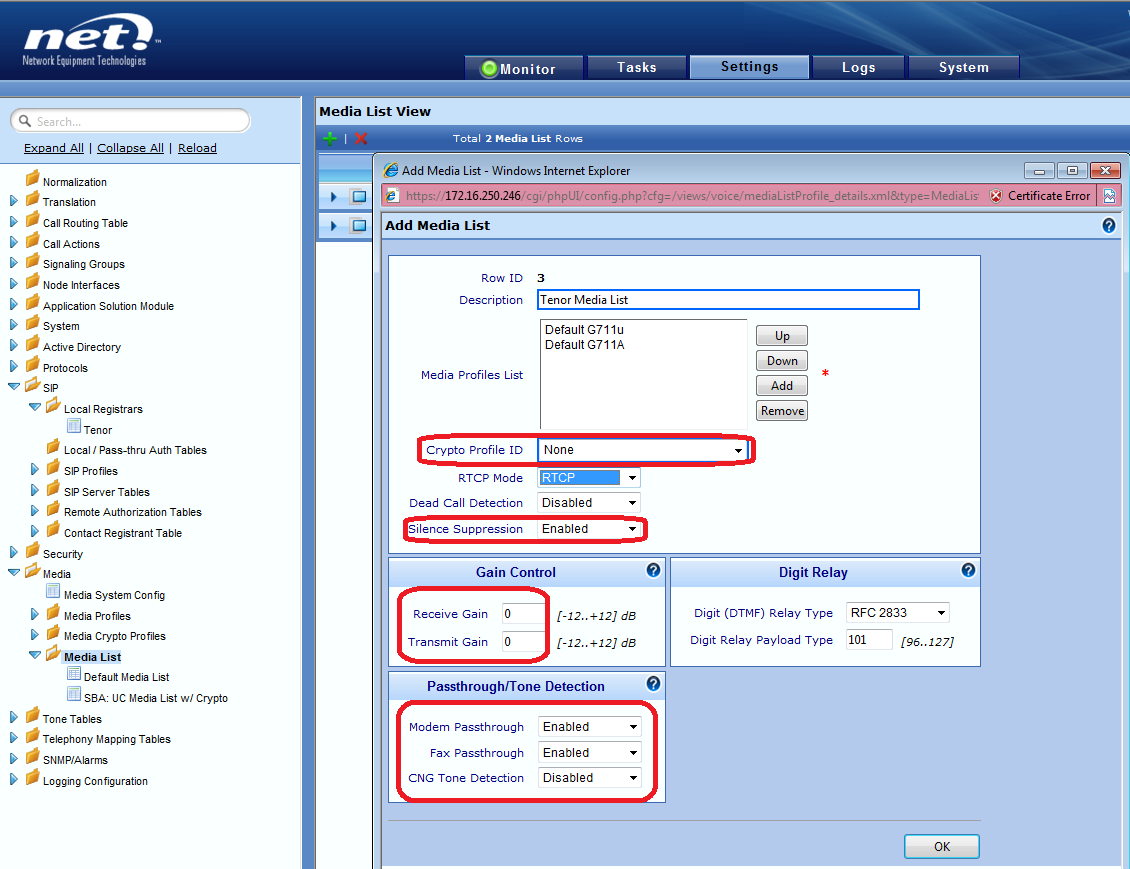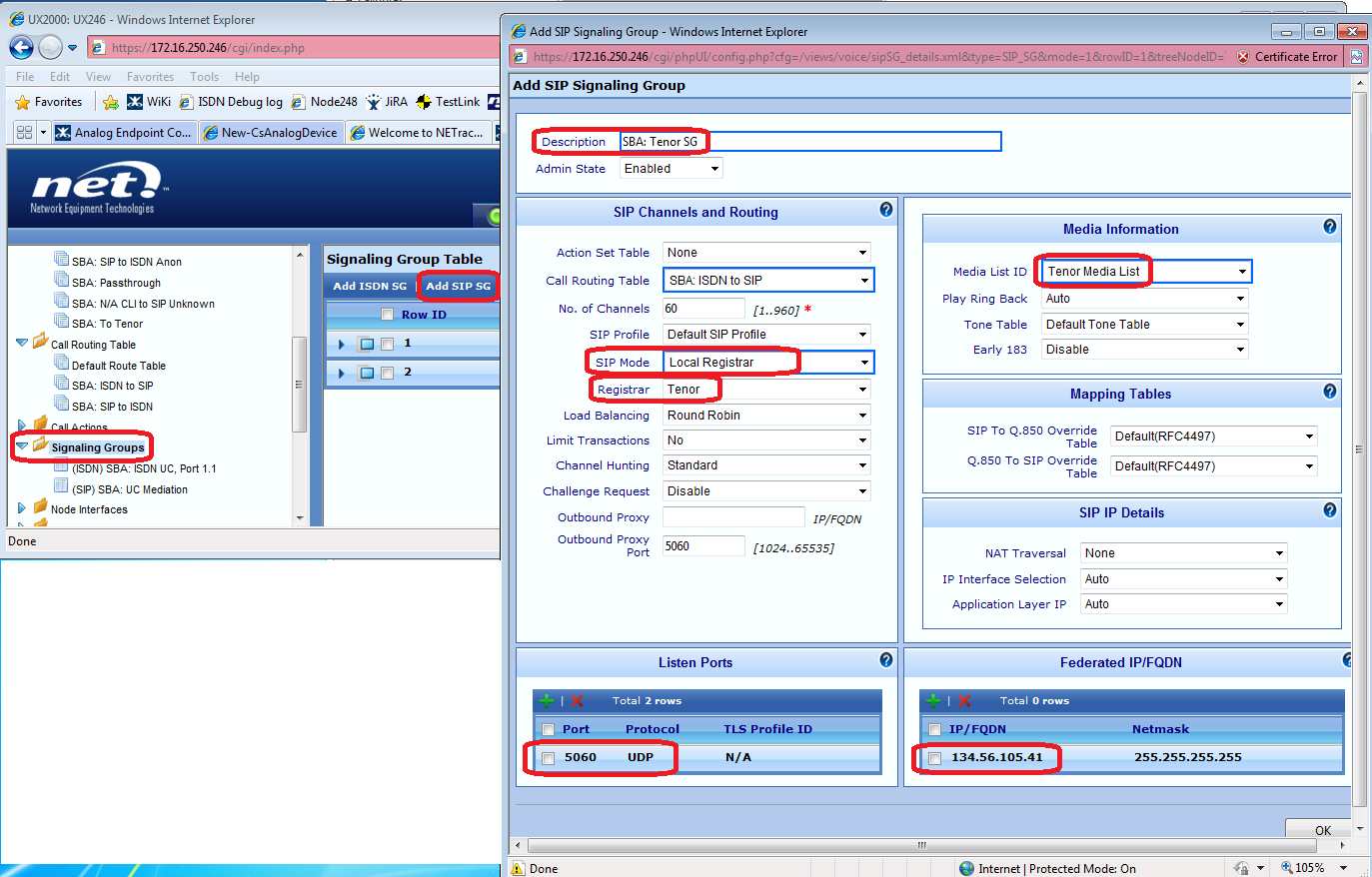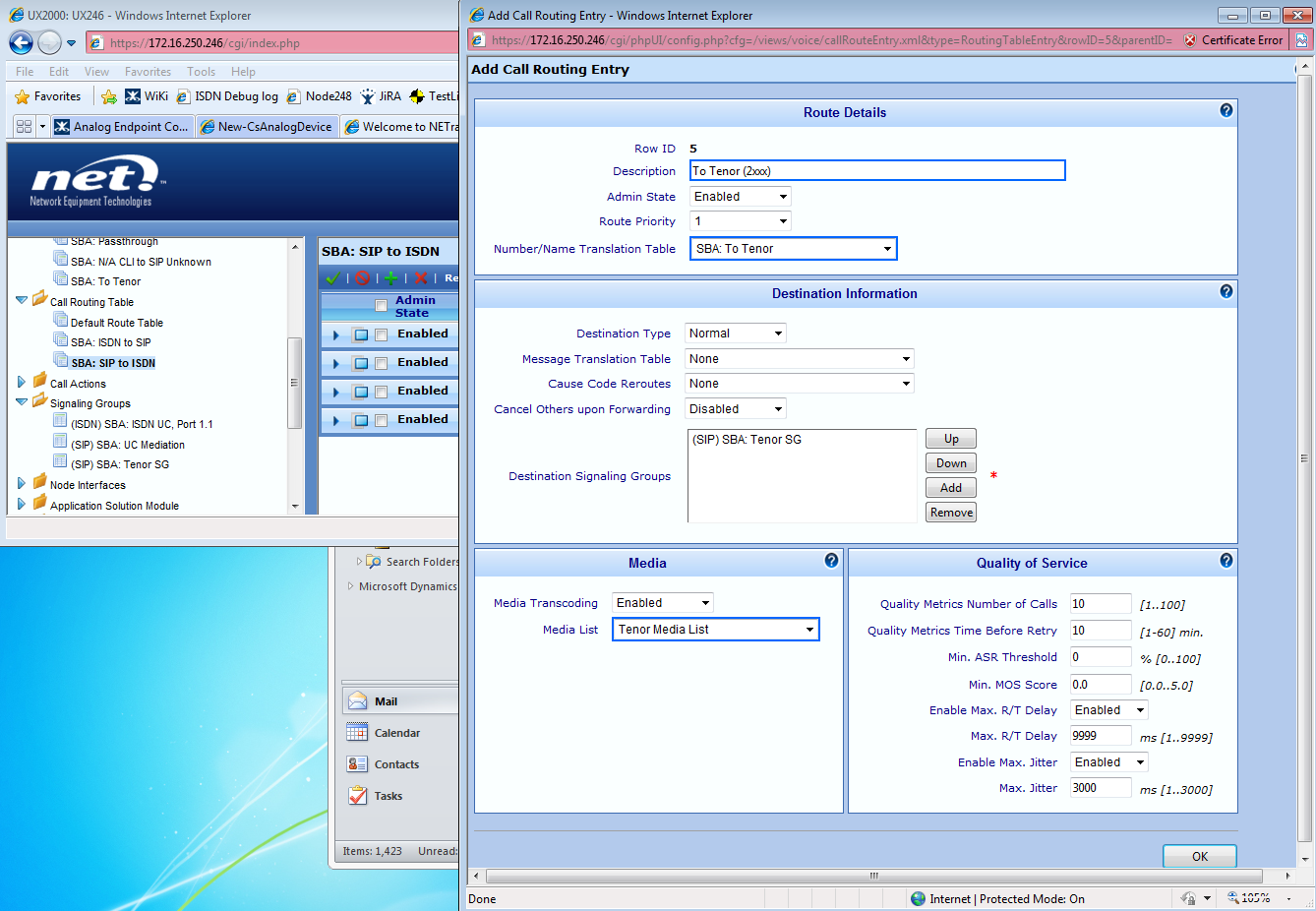Page History
...
- Verify that Phone Port Configuration is completed as shown below
| Panel | |||||||
|---|---|---|---|---|---|---|---|
| |||||||
|
- Continue the wizard steps for Multi Path Configuration
...
| Panel |
|---|
...
|
...
|
- Verify that Multi Path Configuration is completed as shown below
- Continue the wizard steps for Line Port Configuration
- Verify that Line Port Configuration is completed as shown below
- Continue the wizard steps for VoIP Routing Configuration
|
| Panel | |||||||
|---|---|---|---|---|---|---|---|
| |||||||
|
| Panel | |||||||
|---|---|---|---|---|---|---|---|
| |||||||
|
| Panel | |||||||
|---|---|---|---|---|---|---|---|
| |||||||
|
- Verify that Multi Path Configuration is completed as shown below
| Panel | |||||||
|---|---|---|---|---|---|---|---|
| |||||||
|
- Continue the wizard steps for Line Port Configuration
| Panel | |||||||
|---|---|---|---|---|---|---|---|
| |||||||
|
- Verify that Line Port Configuration is completed as shown below
| Panel | |||||||
|---|---|---|---|---|---|---|---|
| |||||||
|
- Continue the wizard steps for VoIP Routing Configuration
| Panel | |||||||
|---|---|---|---|---|---|---|---|
| |||||||
|
- Enter the Sonus SBC 1000/2000 2000 Gateway IP address in the Primary SIP Server IP/Domain Name field and the relevant Port (5060 in this case)
...
- IP/Domain Name field and the relevant Port (5060 in this case)
| Panel | |||||||
|---|---|---|---|---|---|---|---|
| |||||||
|
- Enter the SIP user information for the related 2001 and 2002 users
| Panel | |||||||
|---|---|---|---|---|---|---|---|
| |||||||
|
| Panel | |||||||
|---|---|---|---|---|---|---|---|
| |||||||
|
...
| Panel | |||||||
|---|---|---|---|---|---|---|---|
| |||||||
|
...
- Verify that VoIP Routing Configuration is completed as shown below
| Panel | |||||||
|---|---|---|---|---|---|---|---|
| |||||||
|
- Continue the wizard steps for Idle Channel Configuration
| Panel | |||||||
|---|---|---|---|---|---|---|---|
| |||||||
|
- Verify that Idle Channel Configuration is completed as shown below
| Panel | |||||||
|---|---|---|---|---|---|---|---|
| |||||||
|
- Hit on Accept button on Configuration Summary to complete the wizard run
...
- Configuration Summary to complete the wizard run
| Panel | |||||||
|---|---|---|---|---|---|---|---|
| |||||||
|
- Hit OK to restart the Tenor device as shown below
| Panel | |||||||
|---|---|---|---|---|---|---|---|
| |||||||
|
Additional Post-wizard Settings and Configuration Verrification
...
- Reconnect to Tenor Device using the Configuration Manager and Verify that SIP Signaling Group is configured In General Tab as shown below
| Panel | |||||||
|---|---|---|---|---|---|---|---|
| |||||||
|
- Verify that SIP Signaling Group is configured in Advanced Tab as shown below
| Warning |
|---|
The Transport Type must be set to UDP. |
| Warning |
|---|
The Transport Type must be set to UDP. |
| Panel | |||||||
|---|---|---|---|---|---|---|---|
| |||||||
|
Verify that the Silence Suppression parameter in the IP Routing Group is disabled
| Panel | |||||||
|---|---|---|---|---|---|---|---|
| |||||||
|
Verify the Tx/Rx Gain Values in the CAS Signaling Groups
...
- Verify Tx/Rx gain values in the CAS signaling groups - Phone
| Panel | |||||||
|---|---|---|---|---|---|---|---|
| |||||||
|
- Verify Tx/Rx gain values in the CAS signaling groups values in the CAS signaling groups - Line
| Panel | |||||||
|---|---|---|---|---|---|---|---|
| |||||||
|
Creating a Route For Calls From Tenor to Lync
- In Configuration Manager, right click on Number Tables in left pane and select New as shown below
| Panel | |||||||
|---|---|---|---|---|---|---|---|
| |||||||
|
|
- Create a new Number Tables to allow Analog Endpoints to be able to make calls to LYNC endpoints as wells as to PBX endpoints as shown below
- Create an entry in the Routing Table as shown below
| Panel | |||||||
|---|---|---|---|---|---|---|---|
| |||||||
|
- Create an entry in the Routing Table as shown below
| Panel | |||||||
|---|---|---|---|---|---|---|---|
| |||||||
|
- Modify the default Number Table to allow incoming calls to Tenor Device as shown below
| Panel | |||||||
|---|---|---|---|---|---|---|---|
| |||||||
|
- Verify that "Use Routing Table" option is selected in Gateway configuration field as shown below
| Panel | |||||||
|---|---|---|---|---|---|---|---|
| |||||||
|
Verifying Codec Selection
...
| Info |
|---|
Ensure that the codec settings are identical with the matching codec in Sonus SBC 1000/2000. |
- Verify that Voice Codec settings are configured correctly as shown below
...
.711A. |
- Verify that Voice Codec settings are configured correctly as shown below
| Panel | |||||||
|---|---|---|---|---|---|---|---|
| |||||||
|
| Panel | |||||||
|---|---|---|---|---|---|---|---|
| |||||||
|
Verify Supplementary Services Enabled
...
- Verify that "Detect Flash Hook Signal" option is selected in CAS Signaling Group-phone > Signaling Tab
| Panel | |||||||
|---|---|---|---|---|---|---|---|
| |||||||
|
- Verify that "Generate Flash Hook Signal" option is selected in CAS Signaling Group-line > Signaling Tab-line > Signaling Tab
| Panel | |||||||
|---|---|---|---|---|---|---|---|
| |||||||
|
- Verify that Call Services are selected in Line Circuit Routing Group-phone > Call Services Tab
| Panel | |||||||
|---|---|---|---|---|---|---|---|
| |||||||
|
Change Fax Relay from T.38 without Fallback to G.711
Make sure that Fax Relay is set to G.711.
Info The codec should be either G.711U or G.711A depending on your particular environment.
- Enable both, Fax Relay and Fax Modem Coding:
- Fax Relay: This command configures how the Tenor signals the other end to tell the peer how to switch over to the correct protocol for a fax call. When FaxRelay is set to anything other than 0, there will be a short delay in training as the Tenor determines whether the device at the other end is a fax machine or a modem
- Fax Modem Coding: Enable the Fax Modem Coding configuration option if the Tenor will be used to make modem calls (remote door/elevator control).
When the Tenor is configured for modem over IP calls, FaxModemCoding allows you to select which codec will be used.
When FaxRelay is set to 0 (Disabled), Modem over IP (MoIP) takes over, and all fax calls will be sent as MoIP passthrough with the codec specified by the FaxModemCoding setting.
When FaxRelay is set to anything other than 0, there will be a short delay in training as the Tenor determines whether the device at the other end is a fax machine or a modem.
...
| Panel | |||||||
|---|---|---|---|---|---|---|---|
| |||||||
|
Configuring the Relay of Calling Name (CNAM)
...
- Browse to Sonus SBC 1000/2000 2000 WebUI > Settings Tab > SIP / Local Registrars (in left pane)Click on Add
button and add a )
- Click on Add
button and add a SIP Local Registrar Entry as shown below
| Panel | ||||||
|---|---|---|---|---|---|---|
| ||||||
|
...
|
Media List Configuration
- Browse to Sonus SBC 1000/2000 2000 WebUI > Settings Tab > Media List (in left pane)
- Click on Add
button and add a Media List Entry as shown below
...
|
| ||||||||||
|
| ||||||||||
|
| ||||||||||
|
| ||||||||||
|
|
| Panel | |||||||
|---|---|---|---|---|---|---|---|
| |||||||
|
Translation Table
- Browse to Sonus SBC 1000/2000 2000 WebUI > Settings Tab > Translation (in left pane)
- Click on Add
button and add a Translation Table with following entry as shown below
| Panel | |||||||
|---|---|---|---|---|---|---|---|
| |||||||
|
Signaling Group (uses UDP only)
- Browse to Sonus SBC 1000/2000 2000 WebUI > Settings Tab > Signaling Groups (in left pane)
- Click on Add SIP SG button and add a add a SIP Signaling Group for Tenor Device connectivity as shown below
| Panel | ||||||
|---|---|---|---|---|---|---|
| ||||||
|
...
Call Routing Table
- Browse to Sonus SBC 1000/2000 2000 WebUI > Settings Tab > Call Routing Table (in left pane)
- Click on SIP to ISDN Call Route Table and hit Add
button to add an entry to route calls to Tenor (for those with 2xxx extension in this example)
| Panel | |||||||
|---|---|---|---|---|---|---|---|
| |||||||
|
- Re-sequence the Call Route entries in this table to make sure that calls to 2xxx extensions (Analog Endpoints) will use the entry that you just created in previous step
| Panel | |||||||
|---|---|---|---|---|---|---|---|
| |||||||
|
Troubleshooting Techniques
...
- If you are getting comm errors on the Fax machine, check the following resources for solutions:
- comm error 350 - disable ECM
- error codes 242,346,321,344,388,283 - The first 2 settings you want to change are the error correction (ECM) and v.34 these are on by default you would want these off.
If faxes are failing, check the E1 port counters for slips and frame errors.
Expand Click here to see a screenshot of a *bad* E1 line Click here to see a screenshot of a *bad* E1 line Panel borderStyle none Caption 0 Figure 1 Screenshot of E1 Line - The frame errors and the slips counters must notbe increasing. You can check if they are increasing by resetting the counters. If the errors are increasing, the issue could be caused by one of the following:
- System timing / clocking. Check the clock source (System -> System Timing) - it should be set to Network/T1/E1 port and not System/Free run. If the clock source is set to Network, but the Current Active Clock shows as Free run, click Apply and ensure that Current Active Clock is now set to Primary. This should resolve the clocking issue as long as the error counters do not increase.
- If the Tenor is not configured to register with the Sonus SBC 1000/2000 local SIP registrar and the SIP Signaling group in Sonus SBC 1000/2000 constantly goes down, check the contents of the var_config.cfg file (from Tenor Config Manager -> Tools -> Var_config -> Edit) and delete the line specifying the transport protocol as in P108 it is obsolete.
- Bad E1 cable. Replace the cable.
- Faulty RJ45 jacks. Replace the cable or fix the Rj45 jacks.
- Faulty RJ45 socket. Try configuring a different T1/E1 port. Visually check the pins in the E1/T1 ports for any differences.
Overview
Content Tools

